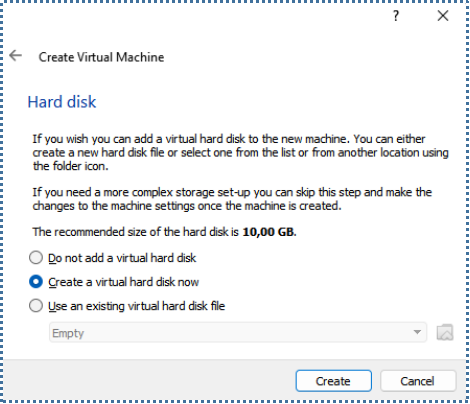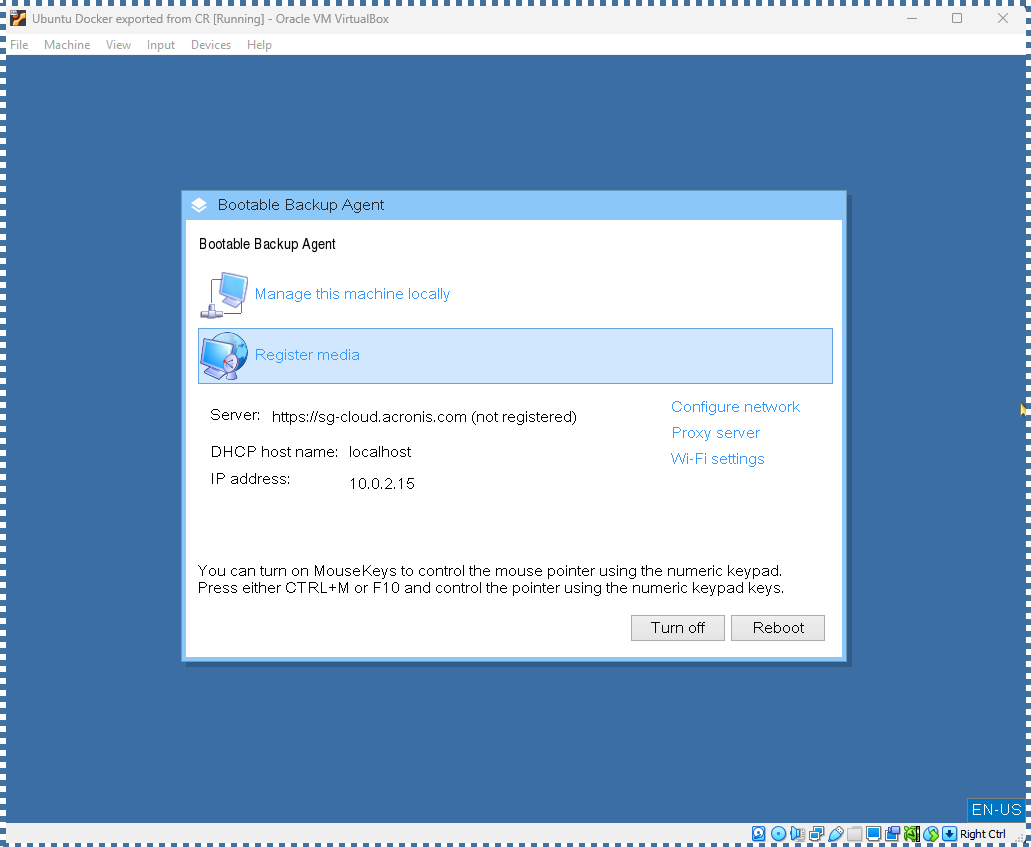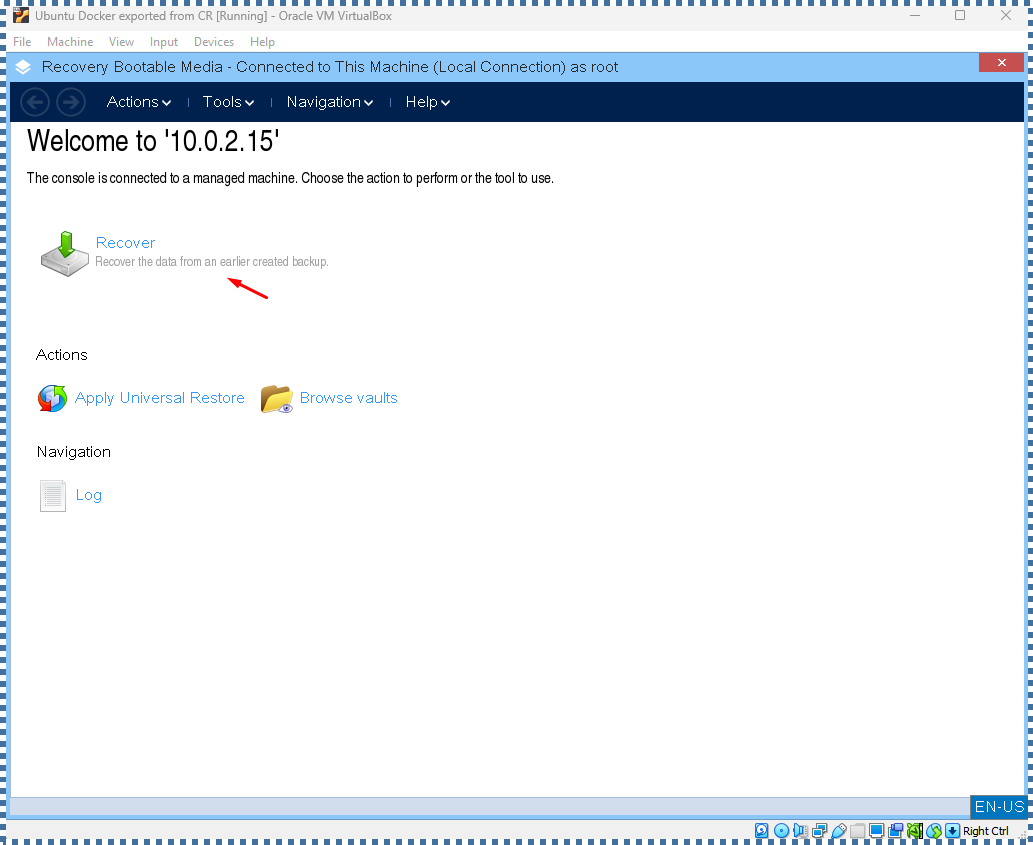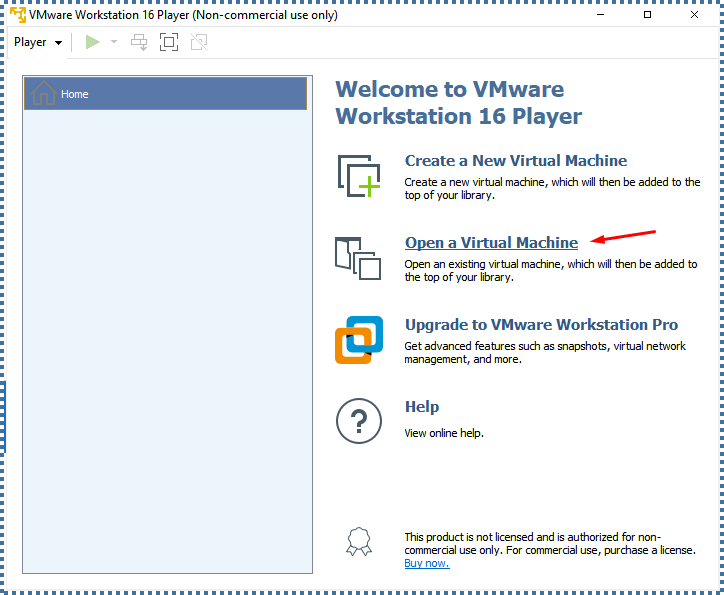-
Products and Features
- Getting Started with CloudRaya Container Registry
- How to use Sudo on a CloudRaya Linux VM
- Keeping Your CloudRaya Linux VMs Up-to-Date
- Maximizing StorageRaya with Essential Practices
- Assign Multiple IP Addresses to Virtual Machine
- Generating a CloudRaya API key
- Simplify CloudRaya Management with API
- Deploying a Virtual Machine on CloudRaya
- Deploying a Kubernetes Cluster on KubeRaya
- Using StorageRaya – CloudRaya S3 Object Storage
- Opening Ping Access on Cloud Raya VM Public IP
- Maximize Your Storage Raya Access Speed with Content Delivery Network (CDN)
- How to Create Project Tag in Cloud Raya for More Organized VM Billing Report
- Exporting Cloud Raya VM to outer Cloud Raya's Infrastructure using Acronis Cyber Protect
- SSO Management on Cloud Raya
- Using the SSH key Feature in Cloud Raya Dashboard
- Cloud Raya Load Balancer, Solution to Distribute Load Equally
- Create your own VPN server with DNS-Level AdBlocker using PiVPN
- Fix Broken LetsEncrypt SSL Certificate due to Expired Root CA Certificate
- How to Make a Snapshot and Configure VM Backup in Cloud Raya
- How to Request Services or Licenses Products
- Adding, Attaching, and Resize Root Storage Disk in Cloud Raya VPS
- Managing your DNS Zone with DNS Bucket in Cloud Raya
- Create VM, Custom Package, Reinstall VM, and Adjusting Security Profile
- How to backup Linux VM via Acronis in Cloud Raya
- How to Backup Desktop Linux and Windows via Acronis in Cloud Raya
- Backing-Up Cloud Raya Windows VM Using Acronis Cyber Protect
- Load Balancing in Cloud Raya
- Establishing a VPN in Cloud Raya
- Generating an API Token
- Deploying a Virtual Machine in Cloud Raya
- Show Remaining Articles16 Collapse Articles
-
- How to backup Linux VM via Acronis in Cloud Raya
- How to Backup Desktop Linux and Windows via Acronis in Cloud Raya
-
- Maximizing StorageRaya with Essential Practices
- Using StorageRaya – CloudRaya S3 Object Storage
- Building a Static Website Using Storage Raya S3 Bucket
- Integrating S3 Storage Raya and Strapi for Asset Storage Optimization – Part 4
- Maximize Your Storage Raya Access Speed with Content Delivery Network (CDN)
- Managing Storage Raya from various tools and from various OS
- Binding NextCloud with CloudRaya S3 Object Storage as External Storage Mount
-
- How to use Sudo on a CloudRaya Linux VM
- Keeping Your CloudRaya Linux VMs Up-to-Date
- Implement Multi-Factor Authentication on CloudRaya Linux VM
- Assign Multiple IP Addresses to Virtual Machine
- Deploying a Virtual Machine on CloudRaya
- Configurating cPanel Using Ubuntu 20.04 on CloudRaya – Part 2
- Deploying cPanel Using Ubuntu 20.04 on CloudRaya - Part 1
- Exporting Cloud Raya VM to outer Cloud Raya's Infrastructure using Acronis Cyber Protect
- Using the SSH key Feature in Cloud Raya Dashboard
- Adding, Attaching, and Resize Root Storage Disk in Cloud Raya VPS
- Create VM, Custom Package, Reinstall VM, and Adjusting Security Profile
- How to backup Linux VM via Acronis in Cloud Raya
- Backing-Up Cloud Raya Windows VM Using Acronis Cyber Protect
- Deploying a Virtual Machine in Cloud Raya
-
Integration
- Implement Multi-Factor Authentication on CloudRaya Linux VM
- Accessing KubeRaya Cluster Using the Kubernetes Dashboard
- Building a Static Website Using Storage Raya S3 Bucket
- Integrating S3 Storage Raya and Strapi for Asset Storage Optimization – Part 4
- Integrating Strapi Content to Frontend React - Part 3
- Content Management with Strapi Headless CMS - Part 2
- Strapi Headless CMS Installation in CloudRaya - Part. 1
- Using SSH Key on CloudRaya VM with PuTTY
- Installing Multiple PHP Versions in One VM for More Flexible Web Development
- Replatforming Apps to K8s with RKE and GitLab CI
- OpenAI API Integration: Completions in PHP
- Building an Email Server on CloudRaya Using iRedMail
- Improving Email Delivery with Sendinblue SMTP Relay
- Building a Self Hosted Password Manager Using Passbolt
- How to Install Podman on Almalinux/Rocky Linux 9
- ElkarBackup: GUI Based backup Tools based on Rsync and Rsnapshot
- Improving Webserver Performance with SSL Termination on NGINX Load Balancer
- Using NGINX as an HTTP Load Balancer
- Automating Task with Cronjob
- Upgrade Zimbra and the OS Version
- Deploy Mailu on Rancher Kubernetes
- Export and Import Database in MySQL or MariaDB Using Mysqldump
- Backup & Sync Local and Remote Directories Using RSYNC
- Managing Storage Raya from various tools and from various OS
- Binding NextCloud with CloudRaya S3 Object Storage as External Storage Mount
- Simple monitoring and alerting with Monit on Ubuntu 22.04 LTS
- VS Code on your browser! How to install code-server on a VM
- Implementing Redis HA and Auto-Failover on Cloud Raya
- Using XFCE Desktop Environment on Cloud Raya VM
- Installing Python 3.7-3.9 on Ubuntu 22.04 Jammy LTS using PPA
- Implementing Continuous Integration with Gitlab CI and Continuous Delivery with Rancher Fleet
- Using Collabora Online on Cloud Raya NextCloud's VM
- Installing NextCloud in Cloud Raya- Detail Steps from the Beginning to the Very End
- Set Up High Availability PostgreSQL Cluster Using Patroni on Cloud Raya
- Set Up WAF KEMP in Cloud Raya Part 2
- Set Up WAF KEMP in Cloud Raya Part 1
- Using the SSH key Feature in Cloud Raya Dashboard
- Monitor Your Services Uptime Using Uptime Kuma
- Hosting Static Website with Hugo on Cloud Raya
- Kubernetes Ingress Controller using SSL in CloudRaya
- Reverse Proxy management using Nginx Proxy Manager
- Create your own VPN server with DNS-Level AdBlocker using PiVPN
- How to deploy Portainer on Linux to easily manage your docker containers
- High Availability Kubernetes Using RKE in Cloud Raya Part 3
- High Availability Kubernetes Using RKE in Cloud Raya Part 2
- High Availability Kubernetes Using RKE in Cloud Raya Part 1
- How to backup Linux VM via Acronis in Cloud Raya
- How to Backup Desktop Linux and Windows via Acronis in Cloud Raya
- Deploying Magento on Cloud Raya
- How to Install Nextcloud on Cloud Raya
- How to Install CWP in Cloud Raya
- How to Install Node.js and Launch Your First Node App
- How to install and secure MariaDB on Ubuntu 18.04 and 20.04 on Cloud Raya
- How to Install and Securing MongoDB on Ubuntu 18.04 and 20.04
- Classes: Post Installation on Ansible
- Classes: Install and Configure Ansible
- Classes: Introduction to Ansible for a robust Configuration Management
- How to Setup Active Directory Domain Service & DNS with Cloud Raya
- How to Host Your Own Docker Hub in Cloud Raya
- How to Setup Your Own Laravel with Nginx in Ubuntu 18.04
- How to Deploy Container in Cloud Raya using Docker
- Securing CentOS with iptables
- Install and Configure Squid Proxy in Ubuntu
- Installing Apache and Tomcat: A Quick Way
- Securing Ubuntu with UFW
- Install a Node.js and Launch a Node App on Ubuntu 18.04
- Installing LAMP in Ubuntu
- Installing LEMP Stack on Ubuntu 18.04
- Show Remaining Articles53 Collapse Articles
-
- Articles coming soon
-
- Implement Multi-Factor Authentication on CloudRaya Linux VM
- Configurating cPanel Using Ubuntu 20.04 on CloudRaya – Part 2
- Deploying cPanel Using Ubuntu 20.04 on CloudRaya - Part 1
- Integrating S3 Storage Raya and Strapi for Asset Storage Optimization – Part 4
- Integrating Strapi Content to Frontend React - Part 3
- Content Management with Strapi Headless CMS - Part 2
- Strapi Headless CMS Installation in CloudRaya - Part. 1
- Using SSH Key on CloudRaya VM with PuTTY
- Building an Email Server on CloudRaya Using iRedMail
- Improving Email Delivery with Sendinblue SMTP Relay
- Building a Self Hosted Password Manager Using Passbolt
- ElkarBackup: GUI Based backup Tools based on Rsync and Rsnapshot
- Improving Webserver Performance with SSL Termination on NGINX Load Balancer
- Using NGINX as an HTTP Load Balancer
- Upgrade Zimbra and the OS Version
- Deploy Mailu on Rancher Kubernetes
- Managing Storage Raya from various tools and from various OS
- Binding NextCloud with CloudRaya S3 Object Storage as External Storage Mount
- Simple monitoring and alerting with Monit on Ubuntu 22.04 LTS
- VS Code on your browser! How to install code-server on a VM
- Implementing Redis HA and Auto-Failover on Cloud Raya
- Using XFCE Desktop Environment on Cloud Raya VM
- Implementing Continuous Integration with Gitlab CI and Continuous Delivery with Rancher Fleet
- Using Collabora Online on Cloud Raya NextCloud's VM
- Installing NextCloud in Cloud Raya- Detail Steps from the Beginning to the Very End
- Set Up WAF KEMP in Cloud Raya Part 2
- Set Up WAF KEMP in Cloud Raya Part 1
- Monitor Your Services Uptime Using Uptime Kuma
- Create your own VPN server with DNS-Level AdBlocker using PiVPN
- How to deploy Portainer on Linux to easily manage your docker containers
- High Availability Kubernetes Using RKE in Cloud Raya Part 3
- High Availability Kubernetes Using RKE in Cloud Raya Part 2
- High Availability Kubernetes Using RKE in Cloud Raya Part 1
- How to Install Nextcloud on Cloud Raya
- Classes: Post Installation on Ansible
- Classes: Install and Configure Ansible
- Classes: Introduction to Ansible for a robust Configuration Management
- Connect Windows Active Directory on Cloud Raya with Azure AD
- How to Host Your Own Docker Hub in Cloud Raya
- How to Deploy Container in Cloud Raya using Docker
- Show Remaining Articles25 Collapse Articles
-
- Accessing KubeRaya Cluster Using the Kubernetes Dashboard
- Integrating S3 Storage Raya and Strapi for Asset Storage Optimization – Part 4
- Integrating Strapi Content to Frontend React - Part 3
- Content Management with Strapi Headless CMS - Part 2
- Strapi Headless CMS Installation in CloudRaya - Part. 1
- Creating Interactive Chatbot with OpenAI API in PHP
- Installing Multiple PHP Versions in One VM for More Flexible Web Development
- OpenAI API Integration: Completions in PHP
- Improving Webserver Performance with SSL Termination on NGINX Load Balancer
- Using NGINX as an HTTP Load Balancer
- Automating Task with Cronjob
- How to Deploy Django App on Cloud Raya VM Using Gunicorn, Supervisor, and Nginx
- How to Install Node.js and Launch Your First Node App
- How to Setup Your Own Laravel with Nginx in Ubuntu 18.04
- Install a Node.js and Launch a Node App on Ubuntu 18.04
-
- How to use Sudo on a CloudRaya Linux VM
- Keeping Your CloudRaya Linux VMs Up-to-Date
- Implement Multi-Factor Authentication on CloudRaya Linux VM
- Using SSH Key on CloudRaya VM with PuTTY
- Building a Self Hosted Password Manager Using Passbolt
- Improving Webserver Performance with SSL Termination on NGINX Load Balancer
- Export and Import Database in MySQL or MariaDB Using Mysqldump
- Backup & Sync Local and Remote Directories Using RSYNC
- How to Deploy Django App on Cloud Raya VM Using Gunicorn, Supervisor, and Nginx
- Set Up WAF KEMP in Cloud Raya Part 2
- Set Up WAF KEMP in Cloud Raya Part 1
- Using the SSH key Feature in Cloud Raya Dashboard
- How to backup Linux VM via Acronis in Cloud Raya
- How to Backup Desktop Linux and Windows via Acronis in Cloud Raya
- Securing CentOS with iptables
- Securing Ubuntu with UFW
- Show Remaining Articles1 Collapse Articles
-
- Configurating cPanel Using Ubuntu 20.04 on CloudRaya – Part 2
- Deploying cPanel Using Ubuntu 20.04 on CloudRaya - Part 1
- Integrating S3 Storage Raya and Strapi for Asset Storage Optimization – Part 4
- Integrating Strapi Content to Frontend React - Part 3
- Content Management with Strapi Headless CMS - Part 2
- Strapi Headless CMS Installation in CloudRaya - Part. 1
- Creating Interactive Chatbot with OpenAI API in PHP
- Installing Multiple PHP Versions in One VM for More Flexible Web Development
- Building an Email Server on CloudRaya Using iRedMail
- Building a Self Hosted Password Manager Using Passbolt
- Improving Webserver Performance with SSL Termination on NGINX Load Balancer
- Using NGINX as an HTTP Load Balancer
- Installing Python 3.7-3.9 on Ubuntu 22.04 Jammy LTS using PPA
- Reverse Proxy management using Nginx Proxy Manager
- Install and Configure Squid Proxy in Ubuntu
- Installing Apache and Tomcat: A Quick Way
- Installing LAMP in Ubuntu
- Installing LEMP Stack on Ubuntu 18.04
- Show Remaining Articles3 Collapse Articles
-
- Building a Static Website Using Storage Raya S3 Bucket
- Integrating S3 Storage Raya and Strapi for Asset Storage Optimization – Part 4
- Integrating Strapi Content to Frontend React - Part 3
- Content Management with Strapi Headless CMS - Part 2
- Strapi Headless CMS Installation in CloudRaya - Part. 1
- Creating Interactive Chatbot with OpenAI API in PHP
- Installing Multiple PHP Versions in One VM for More Flexible Web Development
- OpenAI API Integration: Completions in PHP
- Hosting Static Website with Hugo on Cloud Raya
- Deploying Magento on Cloud Raya
- How to Install CWP in Cloud Raya
- How to Setup Active Directory Domain Service & DNS with Cloud Raya
-
- Articles coming soon
Exporting Cloud Raya VM to outer Cloud Raya’s Infrastructure using Acronis Cyber Protect
When we have VMs in Cloud Raya, sometimes we need to be able to back up these VMs outside the main infrastructure of Cloud Raya, backup the image files to our local for example, or to our DRC server.
One way we can do this is to use Acronis Cyberprotect backup.
Where the main feature of Acronis is actually to backup & restore VMs in a more advanced manner because there are so many features that we can do. One of them is anti-ransomware, RTO and RPO configuration, and many more.
And one of the features that we will be bringing up in this tutorial is the backup of our VM and restoring to infrastructure outside of CR.
To start doing it, there are some prerequisites that we need:
- Have a VM you want to backup
- The VM OS must be compatible and can be backed up by Acronis (Windows, Linux)
- Have an active Acronis subscription
- Have determined the destination to export the VM images. It can be according to your preferences, or you can use mainstream virtualization tools on the market *(VirtualBox, VMWare)
Download the Acronis agent
First of all, we install the Acronis agent in the VM.
This agent functions to connect our VM to our Acronis Cyber Protect service.
Acronis Cyberprotect itself supports backup for quite a number of types of devices, ranging from workstations & servers, mobile devices, and virtualization hosts, to application-based backups.
In this tutorial, my VM is using Linux Ubuntu Server OS.

So we will select the “Linux” option.

↳ The agent file will be .bin, and later we need to adjust the file permissions so that we can execute it via the terminal.
After the agent file download succeed in our local PC, we need to upload the agent file to our VM. There are several methods we can do:
- Can use S3CMD : https://s3tools.org/s3cmd
- Cyberduck : https://cyberduck.ch/
- Or by uploading this agent file into Cloud Raya’s Object Storage.
Because I want to use this agent file again in the future. Then I will upload it into the Cloud Raya’s Object Storage.

For those of you who want to know what Cloud Raya’s Object Storage (Storage Raya) is. Feel free to check this article and video.
Install the Acronis Agent into the VM
Now we access the VM that we want to backup, then download the Acronis Agent from the Object Storage link we already have.

If so, according to my previous explanation, we need to change the file permissions of this .bin so that we can execute it via the terminal.
# chmod a+x CyberProtect_AgentForLinux_x86_64.binWhere the intent of the syntax is to allow all users (users, groups, and others) to be able to execute the CyberProtect_AgentForLinux_x86_64.bin file like a program.
Then we execute the file with the following command:
./CyberProtect_AgentForLinux_x86_64.bin
↳ After that, the launcher of the Acronis Agent installation will appear.

↳ At this warning we can leave it alone, then click OK.

↳ In the component selection, select “Agent for Linux”.

↳ To complete the setup of this agent, we need to register this machine/VM into the Cyber Protection Service.

↳ If we select the “Register the machine” option, an error will appear as above. This error is because our Ubuntu Server VM is only CLI-based, not desktop-based GUI.

↳ Then we can select the option “Show registration info”.

↳ The Registration Code for our VM will be displayed. Now we register via the link provided. This registration code also has an active period of only 1 hour.

↳ Enter the registration code in the provided form.

↳ Click on “Confirm Registration”

↳ If the device is successfully registered, the following dialog box will appear.

↳ Our VM will also automatically appear on the Acronis Cyberprotect dashboard.
Adding the entire machine backup of our CloudRaya VM
The next step, we can start backing up our VM. We can do this by clicking on “Enable Protection”.

↳ On this page, select “Create plan” then “Protection”.

↳ In the New Protection Plan, we select backup for “Entire Machine”. There are several supporting options such as schedules, how many to keep, etc., but I didn’t set them specifically because in this case we only need a one-time backup, so we can export the results to infrastructure outside Cloud Raya. If so, click on “Create”.

↳ Now we run this backup, and wait for the process for a while. It depends on the overall amount of data and the OS system on your VM. Because we will backup one whole machine.
Deploying the Local Virtual Machine
After we have done the backup, now we try to export this backup file out of the Cloud Raya infrastructure.
For example in this tutorial, I will export the backup VM into my local VM which I will deploy in VirtualBox.

↳ On the main panel, click “New”

↳ Enter the details of the VM name, VM storage location, type and version of the OS that we will run on it.

↳ Determine the amount of RAM.

↳ We create the virtual hard drive.

↳ On the virtual hard disk file type, for flexibility in exporting to other virtualization software (such as VMWare Workstation), I will choose VMDK.

↳ Adjust to your needs, if so, now let’s access the Acronis panel to recover the results of our Cloud Raya VM backup to this local VM.
Export the Backup VM to the Outside Infrastructure
Now log back into the Acronis Cyber Protect dashboard panel. On the Cloud Raya VM that we have previously backed up, click on “Recover”, then select “More ways to recover”.


↳ On the available tabs, click on “Download ISO Image”.

↳ After that, the Boot_media.iso file will be downloaded on our local PC.

↳ If we check again on the Acronis Cyber Protect panel, a popup dialog will appear informing the Registration token of our account. Please save this token because we will use it later.
This registration token functions so that we can access our Acronis services via bootable media without having to enter our account username and password.

↳ Now we open the .iso file on our local Virtual Machine.

↳ After that, the Acronis Rescue Media user interface will appear. In the available options, select “Rescue Media”.

↳ Select on “Register media”.

↳ In the dialog box that appears, enter the server from Acronis Cyber Protect, namely https://sg-cloud.acronis.com, and enter the Registration token that we got earlier.

↳ In the window that appears next, click on “Recover”.

↳ In the “Recover data” step, select the backup that we will restore to this Local VM.

↳ Select “Cloud storage”, then select our Acronis Cyber Protect account.


↳ Select the Backup file that we created earlier.

↳ Now we specify the location we want to recover this backup data.

↳ Select storage from our Local VM. If so, click OK

↳ When everything is done, click OK to start recovering backup data from the Cloud Raya’s VM to our local VM.

↳ Let’s wait a while for the process. The speed of the process depends on the size of the backup that we already have and also depends on the speed of our connection.

↳ Here’s the result when the recovery process is complete.

↳ Now we unplug the Bootable Media, then reboot this local VM.

↳ After rebooting, our local VM will automatically be recovered with the exact same condition as our Cloud Raya VM.
Exporting the local VM to another Virtualization Platform
Now we try to export the backup results that we have on this local VM into .ova form.
An OVA file is a virtual appliance used by virtualization applications such as VMware Workstation and Oracle VM Virtualbox.
The OVA file is saved in the Open Virtualization Format (OVF), which is a standard format used to package and distribute software that is run in virtual machines.

↳ In Oracle VirtualBox, select “File”, then “Export Appliance”.

↳ Under “Format”, select Open Virtualization Format 1.0 for a better compatibility.

↳ Wait for the process

↳ Now let’s try on other Virtualization platforms, in this example VMWare.




↳ We select the .ova file then restore.


↳ We can see that our Cloud Raya VM has also been successfully restored in VMWare. And the application inside the VM is also running normally.
Conclusion
Hopefully this article will be a help for you and your project. Find more of tutorial articles in our Knowledge Base. For other IT insights, you can find it in Cloud Raya’s blog. or even better, if you want to try Cloud Raya’s VM, you can directly register here for free.